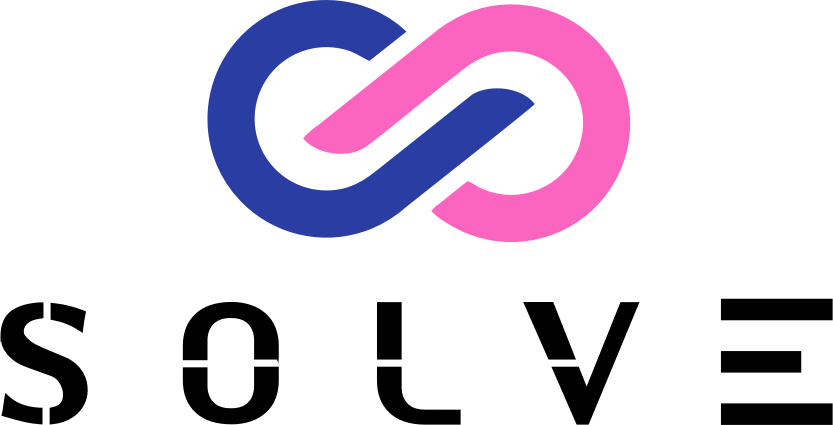- By Vanshika Choudhary
- March 15, 2025
It’s no wonder the that modernization is this rapidly evolving mobile app development industry driven by technology itself, changing user expectations, and the needs for solutions. Passing through the doors of 2025, developers, businesses, and tech enthusiasts must understand the trends shaping the future of mobile applications to keep up with them. Here are 14 mobile app development trends you must have in consideration this year.
-
The Force of 5G Technology
1.1 Heightened Speed and Performance
5G technology can have speeds much faster than before, for example, even up to 100 Gbps. This allows data transfer much faster, thereby making apps work smoothly, especially for high applications like online gaming or video streaming. Developers can enjoy this speed by coming up with complex and very exciting features, without considering the lag or buffering of the app.
1.2 Reduced Latency for Real-time Applications
Reducing latency to as low as 1 ms is one of the most important features of 5G. It proves to be very useful for real-time applications using virtual reality (VR), augmented reality (AR), and even IoT devices requiring instant data processing. For instance, 5G could allow remote surgeries to be performed with seamless real-time feedback in the healthcare sector.
1.3 Future-proofing App Development
As well as that, 5G enables apps to be future-proof since developers can create applications that can adapt to the ongoing technologies. All of these devices will be connected in greater numbers, demanding ever extra input from 5G to really meet the managing demands placed on it by the Internet of Things, smart cities, and, eventually, other future technologies.
-
Artificial Intelligence (AI) and Machine Learning (ML)
2.1 Personalization and User Experience
AI and ML make possible the personalization of experiences by allowing applications to analyze user behavior and preferences. This kind of personalization might include tailored recommendations, customized interfaces, predictive analytics for better engagement of users, and AI-based chatbots for insight into customer problems.
2.2 Automation and Efficiency
These include the automation of data processing, optimization of workflows, and even prediction of possible issues in advance before they occur. Automation is used by AI and ML in the improvement of repetitive functions in apps to be much more efficient. So this all makes the more e-commerce example, with AI automating all at the end customer, processing for inventory management, and order completion tasks.
2.3 Advanced Analytics and Insights
In addition, these technologies also provide advanced analytics by making big datasets interrogable and providing insights into user behavior, market trends, and operating effectiveness. This will lead to better-informed decision-making and improved optimization of business strategies on data rather than intuition.
3. Fun with Augmented Reality (AR) and Virtual Reality (VR)
3.1 Interactive Retail Experience
AR has much changed the face of retail and how shopping is experienced today. It presents a shopping experience in which the customer will view or visualize the product in the home before actually making a purchase from a retailer, thereby making the shopping experience much better while reducing returns. AR also presents a possible product demonstration in real time for easier comprehension by customers of products that may be complex.
3.2 VR For Training and Education
Immersive learning conditions are created, and it revolutionizes training and education. Virtual reality would put students through situations in areas such as medicine and aviation where students can practice standard procedures without the fear of real-world fallout. It would help the students retain learning while decreasing training expenditure.
3.3 New Forms of Entertainment and Gaming
AR and VR make great strides into the worlds of entertainment and gaming. While AR, through games like Pokémon Go, leads users to outdoor events, VR portrays completely immersive real worlds into which video game players can step. More development of this nature is anticipated in the gaming industry in more interactive and immersive experiences.
-
Integration of Internet of Things (IoT)
4.1 Automation of Smart Homes
IoT integration in mobile apps allows all smart home devices to be controlled through one application remotely. The application can change settings for light, temperature, and security from a common interface. This incurs more convenience and energy efficiency. Some apps might learn user trends over time and automate these processes to make homes even smarter and more interesting.
4.2 Industrial IoT Applications
Similar IoT apps in industrial use can track equipment performance, forecast maintenance regimes, and help process production optimization. It reduces downtime, improves safety, and increases productivity overall through real-time data analytics.
4.3 Wearable and Health Monitoring
They can also purchase IoT-enabled devices, which allow users to monitor certain health metrics, including heart rate, sleeping patterns, and physical activity. This information can be processed by mobile apps to give personalized health insights and recommendations and to establish healthier living patterns or, even better, detect diseases early.
-
Cloud Computing Integration
5.1 Flexibility and Scalability
With the help of cloud computing, applications become more scalable as they can accommodate greater user loads with ease and without incurring exorbitant hardware upgrade costs. Flexibility becomes critical during periods of rapid growth to ensure that apps remain basis-responsive and perform well under load.
5.2 Enhanced Protection of Data
Robust security for user data is an outstanding feature of cloud services, from encryption and access controls to backups created at regular intervals. Chances of data breaches or damage are minimal. This means data protection laws such as GDPR are well respected.
5.3 Cost-Effectiveness Development
By availing themselves of cloud support systems, developers can minimize cost components involved in maintaining and upgrading infrastructure. The latter infrastructure can then provide a higher overall percentage of its budgets to app development and innovation, as opposed to infrastructure management.
-
Super Apps
6.1 Convenience and Integration
Super apps create a common space for users, enabling them to enjoy several services like messaging, shopping, and payments at the same point. This makes it extremely convenient for them and ensures that their engagement with the super app itself is maximized by reducing switching between different apps for various functionalities.
6.2 Ecosystem Building
Super apps further build an ecosystem as users could, without leaving the app environment, access a range of services. This would incite businesses to bring their services to these common platforms, so reaching a wider scope and customer base becomes possible.
6.3 Data-Driven Insights
It provides highly detailed data on how individuals react to the offers provided in the market, given that under one umbrella it has bundled several services into one. These insights are of great significance to companies in reshaping strategies and enhancing customers’ experiences.
-
Predictive Analytics
7.1 Personalized recommendation.
Predictive analytics enables recommendations based on past behavior by identifying and predicting future actions from historical data. Personalization is therefore possible via recommendations in the app, enhancing the engagement and conversion rates of users. An e-commerce platform, for instance, can access products based on what has been purchased or browsed previously.
7.2 Operating Efficiency
It can also boost a company’s operational aspects by forecasting demand, controlling inventories, and predicting bottlenecks. Thus, the competition is maintained because the future is properly channeled for challenges and opportunities.
7.3 Risk Management
Through studies of behavioral patterns of users and trends in the market, predictive analytics are able to identify risk and opportunity likely to occur soon. This feature enables the companies to selectively and actively mitigate the impact of risks and inhibits progress from their emergence.
-
Mobile Wallets and Contactless Payments
8.1 Convenience and Accessibility
Mobile wallets are a convenient way for customers to make payments without relying on physical cards or bill payments, and it becomes more accessible in very remote areas with the limited reach of conventional banking services, thus enhancing financial inclusion.
8.2 Enhanced Security
Mobile wallets generally provide robust security, including tokenization and biometric authentication, for the transactions they facilitate. Such security mechanisms enable users to trust these digital routes for their payments.
8.3 Integration with Loyalty Programs
Mobile wallets that seamlessly integrate with loyalty programs enable users to earn rewards and discounts easily, further pushing them to repeat transactions and increase their loyalty.
-
Cross-Platform Development
9.1 Reduced Development Time
Cross-platform frameworks like Flutter and React Native enable developers to create apps under both iOS and Android, respectively, using a single code base. Therefore, a decrease in time and cost ends up being achieved. As a result, the need for maintaining two separate code bases for each platform is eliminated.
9.2 Consistent User Experience
Cross-platform apps ensure a consistent user experience across all devices. This consistency allows for maintaining brand identity and user satisfaction, as users generally expect the same functionality and design, irrespective of the device they happen to be using.
9.3 Cost Efficiency
Cost efficiency is yet another reason why cross-platform development is the better choice. A unified development team will work on development for all platforms, easing resource allocation such that those resources can be used more appropriately for building the application features and user experience instead of being worried about development for one platform rather than the other.
-
Wearable App Integration
10.1 Health and Fitness Tracking
Wearable apps perform the primary task of health and fitness tracking, thus giving users insight about their physical activities, sleeping patterns, and other health metrics. This greatly assists users in goal setting and progress monitoring, thus encouraging more health-conscious living.
10.2 Smart Notifications and Controls
Wearable apps allow smart notifications for users to alert themselves while controlling different devices from a distance. The possibilities include the ability to control music while maintaining notifications without checking the smartphone.
10.3 Integration with IoT Devices
Integrating IoT devices with wearables can provide comprehensive health insights. For instance, smart integration inside a home may allow for a holistic view of how environmental factors influence health.
-
Enhanced Mobile App Security
11.1 Biometric Authentication
Biometric authentication methods like fingerprint and facial recognition are becoming the norm in mobile apps. These methods ensure that security applies to sensitive information being accessed by authorized users only.
11.2 Encryption and Secure Data Storage
Apps are today fully utilizing encryption from end to end for the protection of user data, whether in transit or at rest. Secure data storage is practiced in such a way that even if unauthorized access is gained, the copied data never becomes readable without the presence of the decrypting key.
11.3 Regular Security Updates and Audits
It is fundamental that regular security updates and periodic security audits be implemented to identify vulnerabilities and seal them off before exploitation could take place. By taking this preemptive road, you ensure that your apps stay secure and conform to increasing security standards.
-
Voice Recognition Technology
12.1 Hands-Free Interaction
Voice recognition affords the user hands-free access to the app, therefore ensuring accessibility and convenience. This is especially useful in cases where the user has some reason to be unable to physically interact with the device, like driving.
12.2 Advanced Voice Assistants
Advanced voice assistants such as Siri and Alexa have been exploited for deeper integration into the app, enabling the use of voice commands for complex tasks. These include setting reminders, sending messages, and controlling smart home devices.
12.3 Voice-Based Navigation
Increased use of voice in app-based navigation has allowed users to navigate through menus and access features via voice commands. Changes, therefore, enhance the user experience by minimizing manual effort.
-
On-Demand App Development
13.1 Real-Time Tracking and Updates
On-demand apps, whether for food delivery or ride-hailing, permit real-time tracking and updates. This ensures the user is always updated on the status of his or her request, hence improving transparency and trust.
13.2 Personalized Services
On-demand apps mostly offer personalization based on user preferences and location. Food delivery apps, for example, could suggest restaurants according to previous orders and user ratings.
13.3 Efficient Logistics and Operations
These apps reduce wait time and ensure delivery efficiency by optimizing logistics and operations through algorithms for supply and demand management. This ensures timely and efficient delivery of services. check out our latest blog post on Top 5 Trends in RFID Integration with AI and IoT
-
Audio-Focused Social Media Platforms
14.1 Intimate and Interactive Experiences
An audio focus allows platforms such as Clubhouse to extend this intimate form of live user audio conversation and interaction. This encourages a much more spontaneous and engaging form of interaction than is typically seen on a text-based social media platform.
14.2 Community Building and Networking
Such platforms bring communities together and network with others who share their interests. Audio rooms can be created around topics in order to facilitate real engagements and conversations.
14.3 Accessibility and Inclusivity
Audio-focused platforms are comparatively more accessible to those users who either prefer listening over reading or typing. This very aspect of inclusivity makes social media much more comfortable for a wider audience that might include persons with disabilities or language barriers.
Conclusion
The mobile application development industry is shaped by the integration of new technologies and changing user expectations in the year 2025. These trends-5G, AI, AR/VR, IoT, and cloud computing-will help developers create applications that are not only technologically advanced but also user-oriented. Therefore, Contact us as it becomes necessary for developers and business owners alike to know these trends for succeeding in their businesses and providing excellent user experience.




